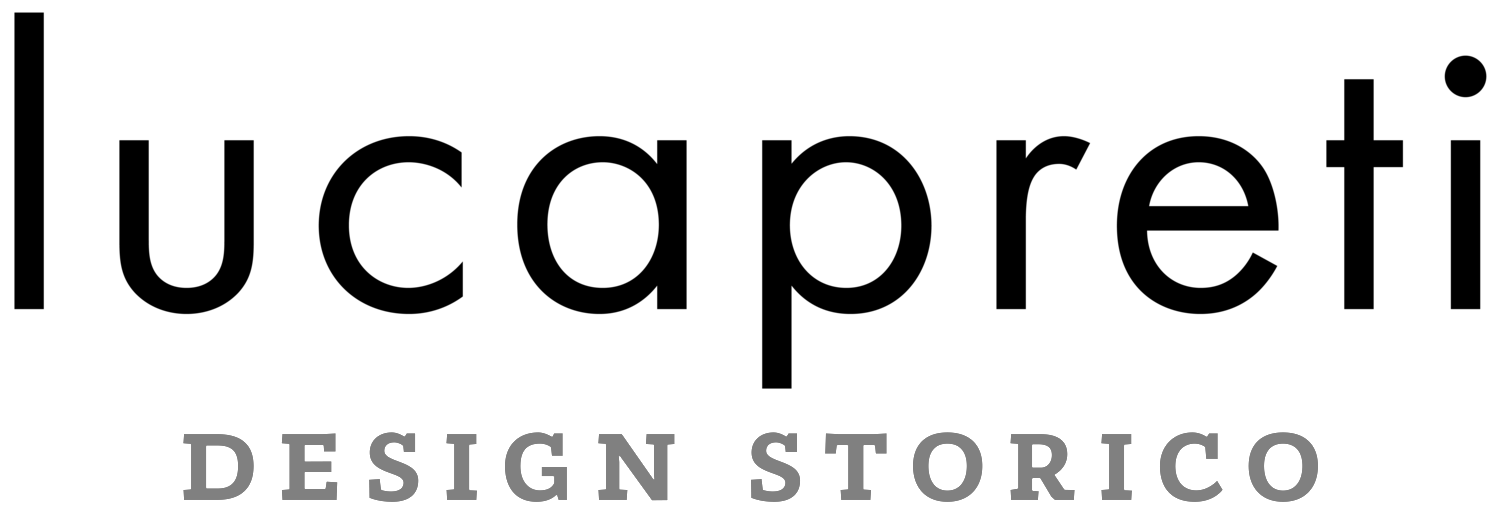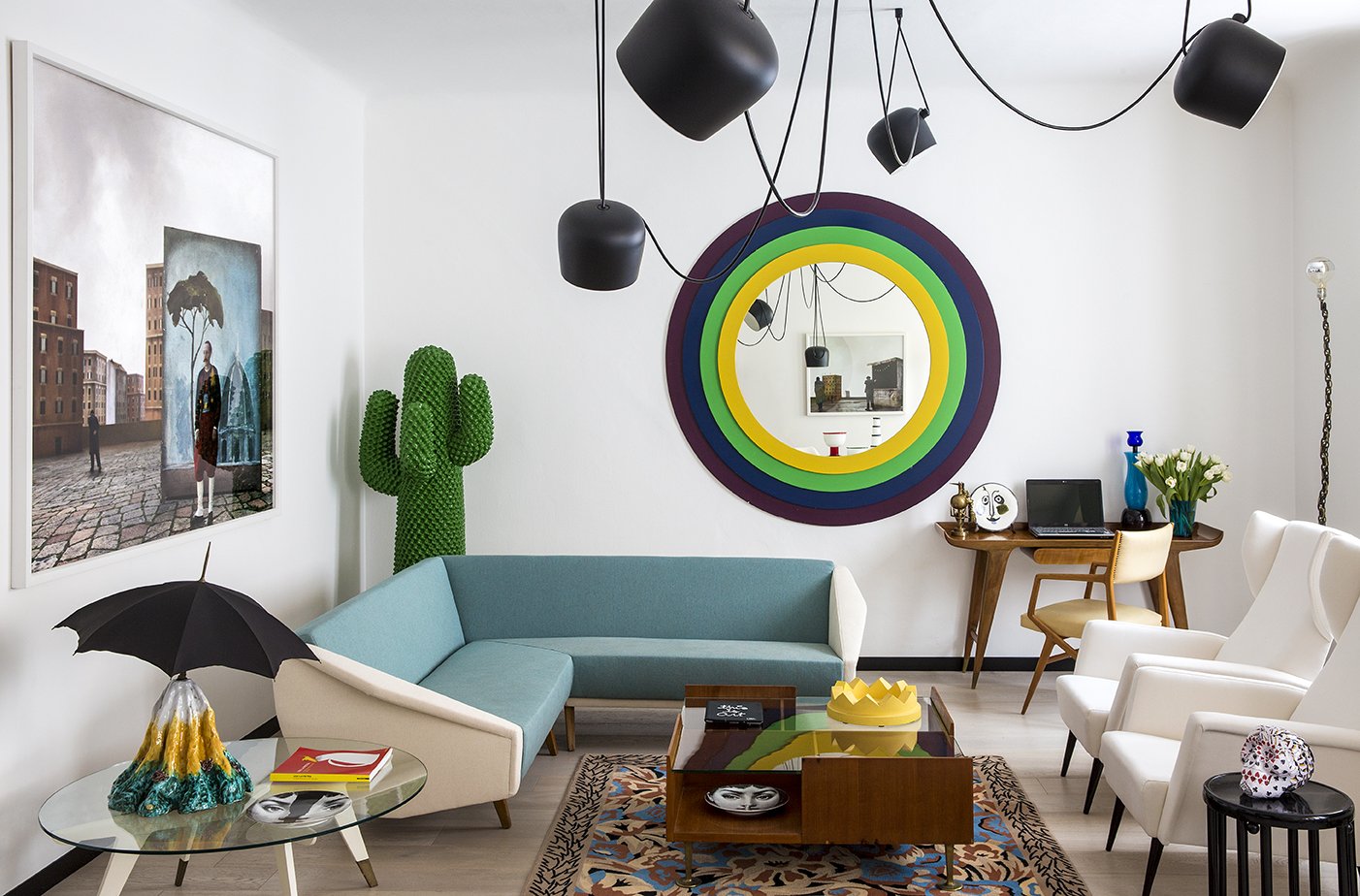Luca M. Fontana
To mark the Fuorisalone del Mobile event in June 2022, the “Luca Preti Design Storico” gallery, whose premises are signed by Architect Marco Parmeggiani, is presenting the numbered re-edition of a wall mirror designed by Ico Parisi in 1972 for a private furnishing project.
For Milano Design Week - from June 6th to 12th - Luca Preti Design Storico Gallery, at 24 Via San Marco in Milan, presents a reissue in limited edition, curated by architect Marco Parmeggiani, of an ample circular wall mirror designed by Ico Parisi in 1972.
The mirror was designed during a period of great cultural and intellectual ferment for the Sicilian architect (Palermo 1916 - Como 1996), who undertook a new path of investigation, involving transverse personalities in his works: art critics, poets, directors, musicologists who worked together on choral projects.
The most evident characteristics of the mirror are its large size and circular shape defined by an overlapping banded frame in intense and vivid tones of yellow, green, blue and violet. Thanks to its shape, the object surpasses its main function and becomes a work of art, making itself the protagonist of the space and main interlocutor between the other furnishing elements.
“The project was born from the desire and pleasure of showing and offering the public a mirror in limited edition designed by architect Ico Parisi. Created in the 1970s, it remained unknown because it wasn’t designed to be put into production,” explains gallery owner Luca Preti. “I therefore decided, thanks also to the support of the Ico Parisi Design Archive, to produce a limited series, maintaining the identical colors and size. The project aims to introduce the public to a historic Italian design element that, without this operation, would remain hidden.”
The reflective surface, surrounded by the bright colors of the frame, contributes to a hypnotic perception of the environment that is amplified through the reflection of the images and, at the same time, constantly focuses on the furnishings, as if it were a new architectural element which reveals the entire aesthetic vision of Ico Parisi.
The limited edition produced by Luca Preti consists of 19 pieces,
of which fifteen are in Arabic numbers and four in Roman numerals, 170 cm in diameter,
each hot stamped and certified by curator Roberta Lietti, Design Archives Manager of Ico Parisi.
FOR ANY EXTRA INFORMATION OR PURCHASE
Ico Parisi (Palermo 1916 - Como 1996) an eclectic mani-sided person with plenty of interests, is considered as one of the major architects who were in avant-garde in Italian design changes after the World War II.
A «Renaissance man» as he used to call himself, Parisi was constantly trying himself at all arts: painting, cinematography, photography, decorative art and obviously architecture and design. The furniture design (where Ico was assisted by his wife Luisa) was a field where Parisi's inspiration manifested in all its originality, especially in the 1950s and then at the end of the 1960s, it turned to more practical but same interesting solutions.
The bright example is the large round wall mirror, designed in 1972. Today Luca Preti proposes it in a limited edition, realised under the supervision of the Ico Parisi Design Archive.
The mirror in it’s hypertrophied, almost «unreal» dimension to put it in Parisi's words, becomes an art-object where the viewer's reflected image, constantly fluid, is surrounded by the colourful frame just like in a game where the static rainbow locks continuous optic illusions. The color solution, surely created by Luisa who was ingenious in combining colours, is alienating and innovative at the same time as it is based on the strong, flat, uniform shades unacceptable by the common tastes of its time. A transgressive choice? No doubts it’s modern and logical because the wake of pop avant-garde in the 70s is still up-to-date and exciting these days.
Roberta Lietti
Responsible curator of Archivio Design Ico Parisi
The salient characteristic of this accessory consists in its large circular shape framed by superimposed bands of colour, thanks to which it stands out like a work of art and dominates the space, making the room look larger.
Like a wall-hung architectural element, it engages the senses and almost presents a hypnotic perception, while creating a different way of interrelating with the surrounding space, whose amplification is conducive to a search for freer and more stimulating home living modes. The resulting effect is a mingling of art, design, and architecture encapsulated in one single project: a sort of habitat of artistic total quality.
Luca Preti



